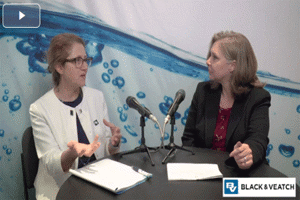WATER SCARCITY RESOURCES
-
If you want to know about the snow, the sky is the limit when it comes to collecting data about the mountain snowpack.
-
England is facing a water crisis. The UK government has just announced plans to fast-track two massive reservoir projects in Cambridgeshire and Lincolnshire, warning that without them, we could run out of drinking water by the mid-2030s. But as a hydrologist who studies Britain’s often erratic weather patterns, I believe these reservoirs alone won’t solve our water problems.
-
The COVID-19 pandemic served as a catalyst for growth in the global water market, prompting consumers to prioritize clean and safe drinking water and leading to increased demand and subsequent market expansion. This trend is expected to continue even in the post-pandemic era, as consumers remain conscious of the importance of high-quality water.
-
World Water Day 2025’s theme is ‘Glacier Preservation’, placing a spotlight on these historic ice masses and their importance. While we know that deglaciation is an obvious indicator of the earth’s warming temperatures, what is the importance of glaciers and their impact on the water industry?
-
As water scarcity becomes a stark reality around the globe, more municipalities, water utilities, and industrial enterprises are exploring water reuse projects and adopting regulations to support them. Fundamentally, water reuse can help drought-proof regions and diversify water supply portfolios with recycled water.
-
Water and wastewater professionals need to know about rights just as much as landowners, especially regarding environmental considerations. Becoming familiar with these rights and regulations will ensure waterways stay healthy, preserved, and full so those who need it can access them.
-
A new report unveiling the true value of water and introducing a new framework to accurately price water and drive investment in the sector.
-
Immigration and border security will be the likely focus of U.S.-Mexico relations under the new Trump administration. But there also is a growing water crisis along the U.S.–Mexico border that affects tens of millions of people on both sides, and it can only be managed if the two governments work together.
-
Many cities have had to confront major water supply crises in recent years. Our new analysis of these five cities’ experiences provides lessons on how to avoid a water supply crisis or minimize the effects through proactive policies and planning.
-
As Los Angeles struggles with one of the worst wildfires in history, all eyes are on the region’s (and, arguably, the nation’s) water infrastructure. Should California’s water infrastructure have been better prepared to handle the unprecedented demand? Water utilities nationwide are wondering what the turn of events means for them.











